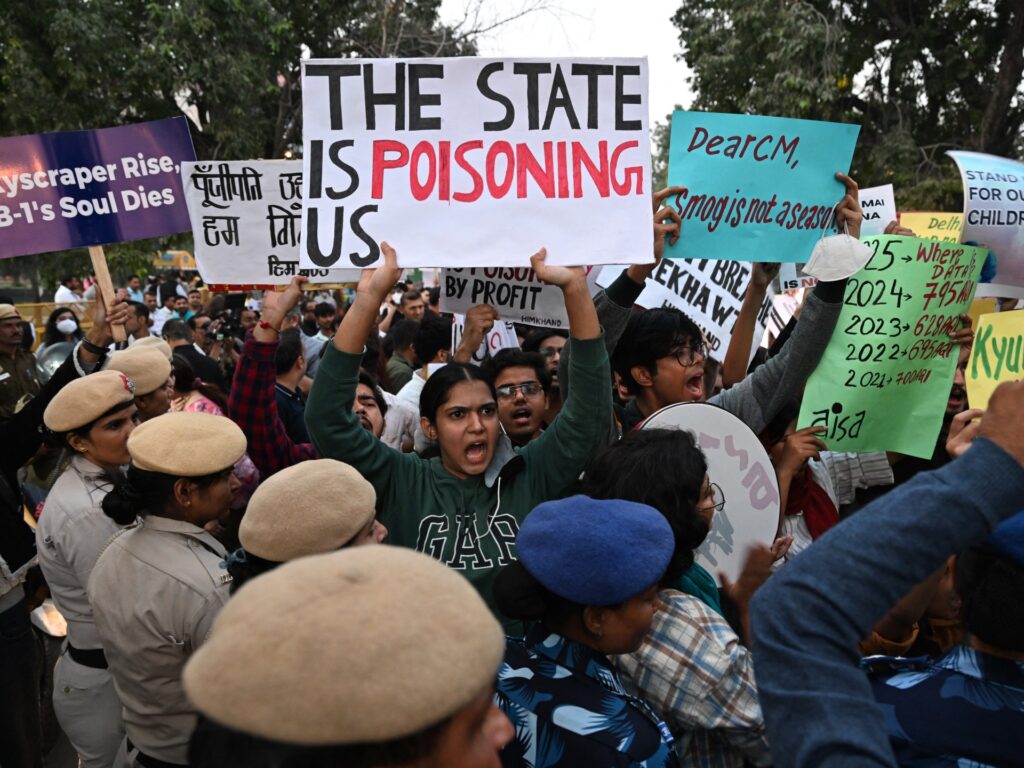Published On 10 Nov 2025
A suffocating blanket of smog has engulfed India’s capital, permeating the air with an acrid smell as pollution levels soar, intensifying a public health emergency that has driven residents to demand governmental action.
By Monday morning, New Delhi’s air quality index had reached 344, categorised as “severe” and hazardous to breathe according to the World Health Organization’s recommended exposure thresholds.
In a compelling demonstration of public concern, dozens of protesters assembled in New Delhi on Sunday, calling for government intervention to combat the capital’s toxic air crisis as dangerous haze shrouded the city.
Children joined their parents at the demonstration, wearing protective masks and carrying placards, including one that starkly declared: “I miss breathing.”
New Delhi, home to a metropolitan population of 30 million people, persistently ranks among the world’s most polluted capital cities.
Every winter, a toxic smog obscures the skyline when cooler temperatures trap pollutants close to ground level, creating a deadly combination of emissions from agricultural burning, industrial operations, and vehicle exhaust.
Levels of PM2.5 – carcinogenic particles small enough to penetrate the bloodstream – regularly surge to concentrations 60 times above the UN’s recommended daily health guidelines.
“Today I am here just as a mother,” said protester Namrata Yadav, who attended the protest with her son. “I am here because I don’t want to become a climate refugee.”
At the protest location near India Gate, the historic war memorial, PM2.5 readings surpassed the World Health Organization’s recommended daily maximum by more than 13 times.
“Year after year, it is the same story, but there is no solution,” said Tanvi Kusum, a lawyer who explained she joined because she was “frustrated”.
“We have to build pressure so that the government at least takes up the issue seriously.”
Government measures to tackle the crisis have proven inadequate, including limited restrictions on fossil fuel vehicles and water trucks spraying mist to suppress airborne particulate matter.
“Pollution is cutting our lives,” declared a young woman who identified herself as “speaking for Delhi” and declined to provide her name.
Research published in The Lancet Planetary Health last year estimated that 3.8 million deaths in India between 2009 and 2019 were attributable to air pollution.
The United Nations children’s agency, UNICEF, cautions that contaminated air dramatically increases children’s susceptibility to acute respiratory infections.
As evening descended on the smog-veiled skyline, the crowd expanded until police stepped in, forcing several activists onto a bus and seizing their protest materials, claiming they lacked proper demonstration permits.
One partially torn sign captured the essence of their plea: “I just want to breathe.”
https://www.aljazeera.com/gallery/2025/11/10/1744?traffic_source=rss


